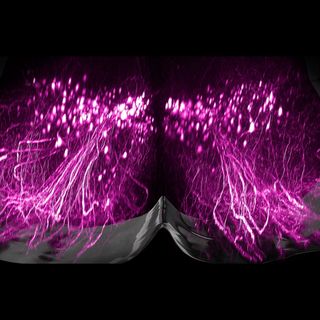
Scientists Made a Material That Doesn’t Exist on Earth
Tetrataenite is a compound that was only found in meteorites so far — and it could revolutionize green energy.

Last month, two teams of scientists — from USA’s Northwestern University and UK’s Cambridge University — came up with methods to synthesize a material that doesn’t exist on Earth. The scientists devised their own methods to create tetrataenite — a complex iron and nickel alloy present exclusively in meteorites landing from outer space. In the long run, this development holds the potential to revolutionize green energy.
A vital component of building renewable energy options is permanent magnets. Magnets and magnetic materials’ ability to generate electricity provides a cleaner, emission-free alternative to energy obtained from fossil fuels. The most powerful permanent magnets currently are rare earth magnets. These are magnets built from alloys of rare earth elements and have a much higher magnetic field than regular magnets. However, obtaining rare earth elements — named so not because of their scarcity but the low concentration in which they are distributed across the planet — exacts a heavy toll on the planet.
Extracting rare earth elements from their ores generates a gigantic amount of toxic waste: mining every ton of rare earth generates, according to the Harvard International Review, “13kg of dust, 9,600-12,000 cubic meters of waste gas, 75 cubic meters of wastewater, and one ton of radioactive residue.” Further, “rare earth ores are often laced with radioactive thorium and uranium, which result in especially detrimental health effects. Overall, for every ton of rare earth, 2,000 tons of toxic waste are produced.” These issues make green energy derived from permanent rare-earth magnets paradoxical, and necessitate looking for alternatives.
This is where laboratory tetrataenite comes in. In its naturally occurring form on the surface of meteorites, tetrataenite forms over millions of years. As the meteorite cools, its iron and nickel atoms order themselves into a unique stacking sequence. The resulting alloy has magnetic properties similar to rare-earth elements. “The iron and nickel atoms have to rearrange themselves. And nature will do it, but it will take millions of years to do,” Laura Lewis, one of the scientists with the team of scientists from Northwestern University, noted in a press release, highlighting the need for synthesizing tetrataenite in the laboratory. “If we can do it in industrially relevant time scales, we will have a nice new addition to the permanent magnet portfolio.”
Related on The Swaddle:
Scientists Used Crab Shells to Make Safe, Sustainable Batteries
This isn’t the first time scientists tried synthesizing tetrataenite on earth. The group of scientists at Cambridge acknowledged that in the 1960s, in an experiment, scientists successfully obtained tetrataenite by bombarding iron-nickel alloys with neutrons that would trigger the iron and nickel atoms to stack together in the same manner as they do in tetrataenite. However, such a method, the scientists note, is unsuitable for mass production. “Since then, scientists have been fascinated with getting that ordered structure, but it’s always felt like something that was very far away,” Lindsay Greer, one of the scientists on the Cambridge team, remarked in a press release discussing the findings of their study.
The team of scientists at Cambridge began their research by studying the mechanical properties of different iron-nickel alloys. They particularly focused on those alloys that also contained tiny amounts of phosphorous, another element often found in meteorites. They observed that the alloys containing phosphorous indicated an ordered atomic structure, similar to that of tetrataenite. The team decided to confirm their findings by building their own iron-nickel-phosphorous alloy, and in a few seconds were successful in synthesizing tetrataenite by composing the alloy using the right proportions of the elements. “What was so astonishing was that no special treatment was needed: we just melted the alloy, poured it into a mould, and we had tetrataenite,” remarked Greer.
The scientists at Northwestern University, in their experiments, were able to synthesize tetrataenite using multiple elements in their iron-nickel alloy. In their patent, Lewis and her team mention that tetrataenite can be made using molten iron and nickel, using any of the following third elements: Titanium, Vanadium, Almunium, Boron, Carbon, Molybdenum, Iridium, and Niobium.
The researchers are now exploring laboratory-made tetrataenite’s practical viability as a material to replace rare-earth elements in permanent magnets. If successful on a large scale, it may indeed result in a major shift in how we obtain our energy and fuels, with the potential to enter a phase of using truly green energy.
Amlan Sarkar is a staff writer at TheSwaddle. He writes about the intersection between pop culture and politics. You can reach him on Instagram @amlansarkr.
Related


Electrical Stimulation Restores Ability to Walk in People With Paralysis
